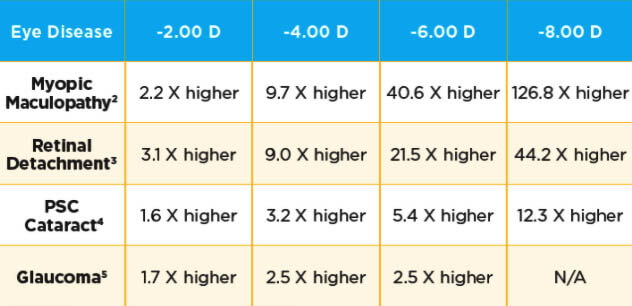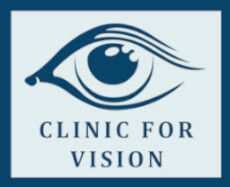Myopia Management in Alabama
Is Your Child Short-Sighted?
Childhood myopia, also known as near or short-sighted, can cause very serious eye diseases later in life. Offer your child a brighter future with myopia management.
Why Does Myopia Need to Be Managed?

Myopia (nearsightedness) is reaching epidemic proportions. By 2050, half of the world’s population is expected to have myopia. That’s worrying, as having myopia significantly raises the risk of developing sight-threatening eye diseases later in life, such as cataracts, glaucoma, retinal detachment and macular degeneration.
The level of myopia a child has is directly correlated to their risk of eye disease — the higher the myopia, the greater the risk. A child between -0.75D and -3.00 is more than 3 times more likely to develop retinal detachment in the future. That number triples for individuals with high myopia (-5.00 and above).
If you’re concerned that your child’s vision is deteriorating, contact Clinic for Vision PC Myopia Management Center today. We can help.
Did You Know Myopia Is Caused By Abnormal Eye Growth?
Myopia is the most common refractive error among children and young adults. It occurs when the eye elongates, causing rays of light to focus in front of the light-sensitive retina rather than directly on it. This causes distant objects to appear blurred while nearby objects remain clear.
The degree of myopia can progress gradually or rapidly, especially from ages 8-18. This is not just a matter of inconvenience or needing stronger glasses; if the myopia continues to progress, the child is at a higher risk of developing dangerous eye diseases later in life that can lead to permanent vision loss and even blindness.
Although [eyeglasses] and standard contact lenses can correct a person’s vision, they do not treat the underlying cause of myopia or slow its progression.

Treatment Options for Myopia
There are three specific treatment options to slow the progression of myopia.
- Orthokeratology (Ortho-k)
- Atropine eye drops
- Multifocal contact lenses
Our doctors work closely with each family and customize treatment programs for every child based on their unique needs. Patients are thoroughly evaluated, carefully monitored, and reviewed frequently in order to monitor progress and modify the treatment to ensure best outcomes. Follow-up visits generally occur every 6-12 months to assess the treatment’s efficacy.

What Parents Are Saying About Myopia Management
Myopia increases the risk of serious, sight threatening complications.

How Do I Know If My Child Needs Myopia Management?
If you are concerned about your child’s myopia, call our practice today. Our team of eye care professionals will help you understand more about your child's nearsightedness and will determine whether your child is a candidate for myopia management.
Take our myopia assessment online to find out whether your child could benefit from this life-changing treatment.
Myopia Management Offers a Brighter Future | FAQ
If you’ve been wearing glasses or contacts for many years without much concern, it may seem unnecessary to manage your child’s myopia. However, it’s a worthwhile and important investment, as rapidly progressing myopia may lead to more severe eye complications and sight-threatening conditions, such as cataracts, glaucoma, macular degeneration and retinal detachment.
In fact, the longer the eyeball length, the greater the risk of ocular complications down the line.
Myopia management has been shown to effectively help reduce the rate of growth of the eyeball in children and teens by slowing its progression. Offer your child a brighter future with myopia management.














